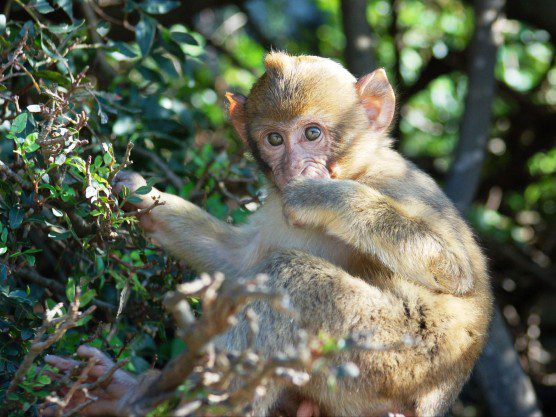Damien, the demon monkey of Main Street
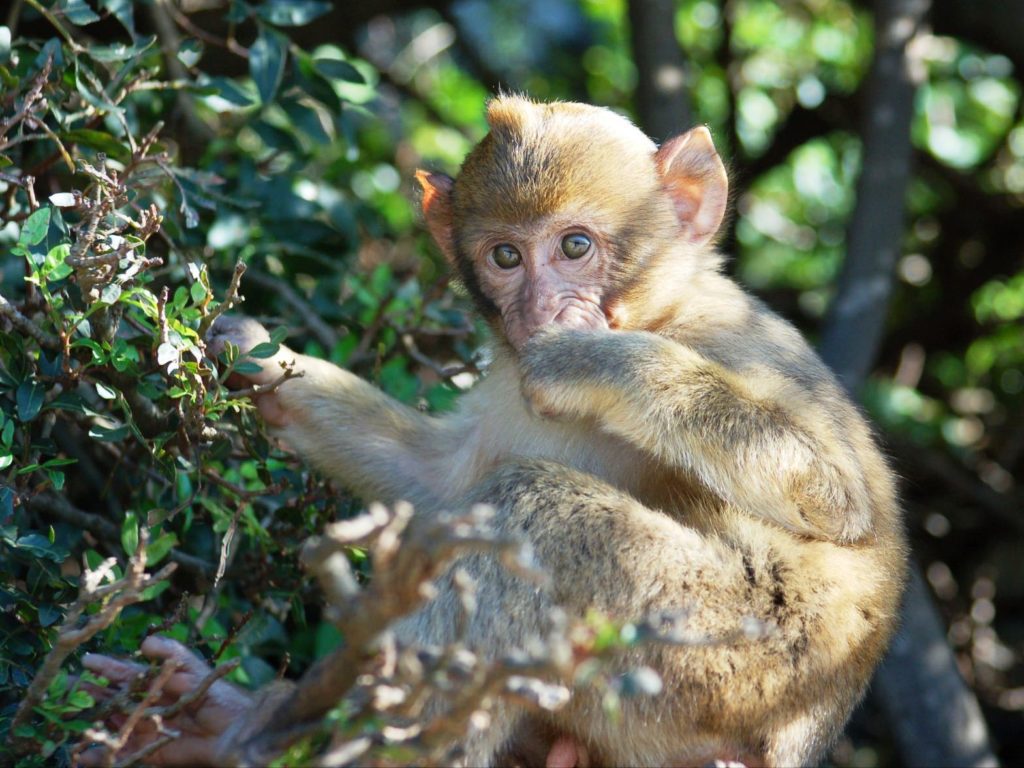
Although Barbary macaques are native to northern Africa, their most famous representatives live on the other side of a little piece of the Mediterranean Sea, on the Rock of Gibraltar. Keri Cairns, who was doing some investigative photojournalism for us earlier this year to check on the status of these monkeys in the wild, felt it would be remiss of him to finish his trip without stopping by to see the world-famous “Rock Apes.” The Upper Rock receives an average of 800,000 tourists a year, and the free-ranging primates are the main attraction.

One popular way to see Gibraltar’s world-famous “Rock Apes” (they’re actually Barbary macaque monkeys) is via cable car.
They are clearly, of course, monkeys, not apes, even though they don’t have tails. What is not clear is how this small (non-native) population of monkeys got to Gibraltar. “The most likely source was introduction by the Moors around 700 AD,” Keri told us.
“During my time in Morocco, I was witness to the progressive scale of what can happen when Barbary macaques become habituated. In the Rif Mountains the macaques clearly want nothing to do with us and stay well away. In Ouzoud, the macaque group is becoming more confident and associate people with food, though not all the macaques are interested. In Azrou, the ‘Tourist Group’ monkeys clearly associate people with food, and the youngsters accept this as the norm.”
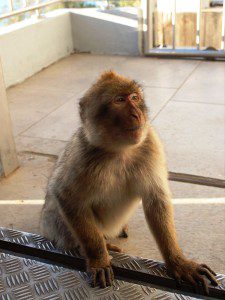
Gibraltar’s monkeys are beyond habituated to humans: they’re urbanized.
But in Gibraltar, close human-monkey contact has been happening for centuries. “This has resulted in the monkeys’ becoming ‘urbanized,’ the next step up from being ‘habituated,’” Keri explained
Keri encountered one particularly memorable monkey who had certainly taken things to the next level. “Just around the corner from my hotel, I met Damien, an adult male macaque. Damien had been ousted from his local group, which has four other males. Now he chooses to spend most of his time hanging out on Main Street and hijacking anyone with a plastic bag!
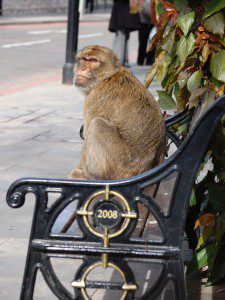
Damien the Barbary macaque has learned to survive on the streets of Gibraltar.
“His strategy is simply to approach people quickly and confidently. The majority of people drop the bag and, on one occasion that I saw, the giant bar of chocolate they decided to produce right in front of him.”
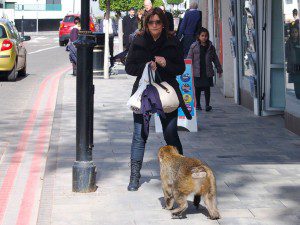
Damien’s strategy: the confident approach…
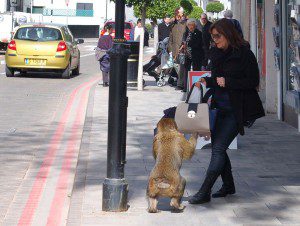
…the startled victim….

…and the reward is his!
Unfortunately, Damien is just one example of what many of Gibraltar’s monkeys do to acquire tasty high-calorie treats. This is in addition to raiding insecure rubbish bins and other sites for leftover human food. The over-fed macaques go on to produce more offspring than this urban area can readily support. Sometime the government response to these “excess” monkeys can be drastic.
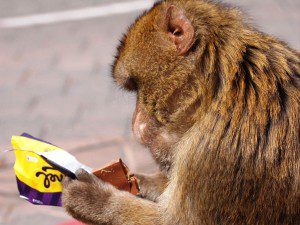
A diet of junk food is not going to be good for Damien–or any other macaque.
Keri recalled, “I last visited Gibraltar five years ago when news got out of a proposed cull of the macaques. Thankfully, the monkeys now have friends in high places, excuse the pun. In 2011 a new government came into power, and its new Chief Minister, Fabian Picardo is opposed to any culling of the macaques. In 2008, he actually likened culling the macaques to Disney killing Mickey! The new Minister for the Environment is Dr. John Cortes, the former head of the Gibraltar Ornithological and Natural History Society, a world expert in Barbary macaques. The new government is soon to release a new ‘ape’ management plan and a public campaign. The provisional title is ‘Get our monkeys back to nature.’”
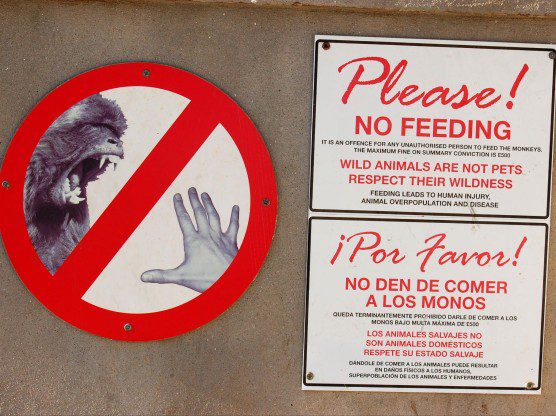
Signs like these are common, but they have not helped.
While Keri was in Gibraltar, he also met with Eric Shaw, head of the “ape” management team. “Eric was able to show me one of the main problems in town: rubbish. Gibraltar is incredibly lucky to have nightly rubbish collections. Unfortunately, some people don’t understand that if they put their rubbish out during the day it is too tempting for a lazy macaque. We all love cold pizza, why shouldn’t they? These are the same people who complain that their rubbish was strewn all over the street and that all the nice, ripe plums were stolen off their tree.
“There are warning signs around town and a fine threatened for anyone leaving rubbish out. Unfortunately, these are ignored much as the signs not to feed the macaques up on the nature reserve are: fines for feeding the macaques on the Upper Rock have been in place since 1921—but to this day not a single person has been fined!”
However, there is hope that Gibraltar’s citizens will be able to live more in harmony with their monkey neighbors. “Eric was able to show me several new strategies that are being implemented,” Keri told us. “These include additional feeding stations away from the public areas, new signage, and clearance of the scrub to create areas for the macaques to forage.”
With a little help from their friends, the Barbary macaques of Gibraltar—and their wild cousins in northern Africa—should be able to thrive, with a minimum of human interference.


